It’s often said that the true dawning of an artist’s legacy begins only after his or her death. But when it comes to Ulay, the celebrated performance artist, photographer, and ex-romantic partner of Marina Abramović, his legacy was well established during his pioneering and, at times, scandal-ridden career.
But in the wake of Ulay’s death, on March 2, after a long battle with cancer, the people he left behind are beginning to reimagine his legacy. Ulay, born Frank Uwe Laysiepen, had spent the better part of the last year launching a project space-cum-archive between the two cities he called home: Ljubljana, Slovenia, and Amsterdam.
In his last televised interview, Ulay described his bespoke space as a “connecting point,” saying that it meant “almost everything” to him. He officially launched the Ulay Foundation and Project Space late last year in Ljubljana, though it did not quite have the chance to fully lift off before the artist’s health began to decline. Now, the multi-faceted project is dedicated to re-evaluating the artistic trajectories he helped shape—most notably performance art and photography, but also socially and politically engaged art—as it plans mentorships, creative collaborations, as well as a major retrospective at the Stedelijk museum in Amsterdam, the artist’s largest to date.
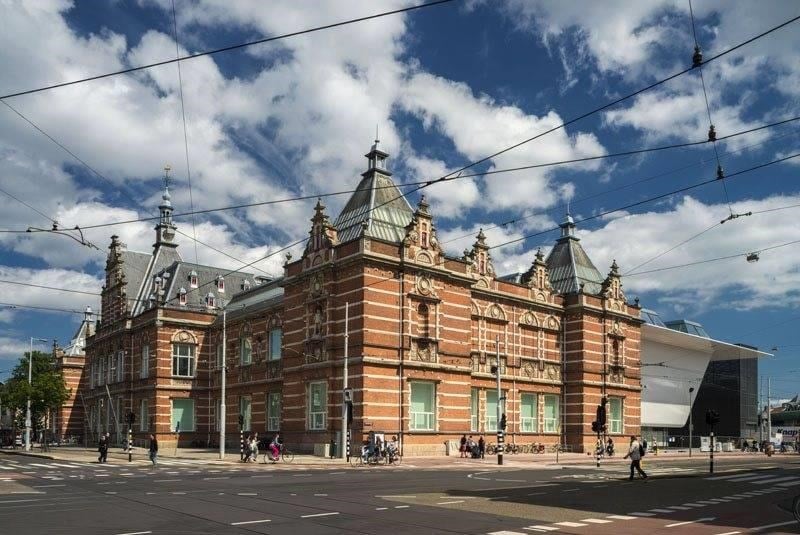
The Stedelijk Museum. Image courtesy of the museum.
A Posthumous Retrospective
For Hana Ostan Ožbolt, the managing director of the foundation and project space, a big part of her job now involves thinking about how to preserve the legacy and archive of an artist who defied easy categorization. “It’s hard to grasp the variety of his oeuvre, much less the complexity of his artistic expression, which is not solely photographic or performative, but is at the intersection of both, and much more,” she says. Considering Ulay’s legacy becomes about manifesting an archive that runs counter to every rule in the book.
That challenge is at the forefront of Ožbolt’s mind as she helps organize Ulay’s archive to send out to his hometown retrospective at the Stedelijk in November, which is being curated by Hripsimé Visser, the institution’s curator of photography. Amsterdam is deeply rooted in Ulay’s practice, and is probably the city where he had his strongest network after he first emerged on the European art scene in the 1960s.
Many artists were drawn to Amsterdam at the time for its freewheeling spirit, as ongoing student protests rocked the city and the values of democracy and social justice were hotly debated.
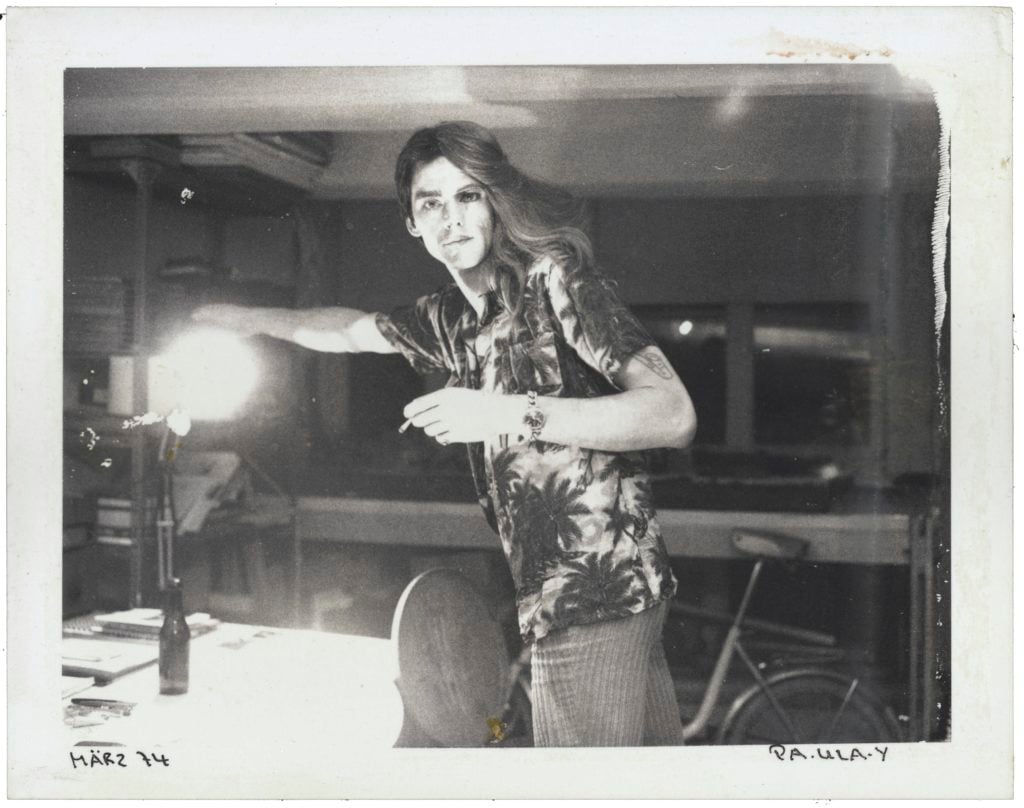
Ulay, She (1973-74). Courtesy of the Ulay Foundation and Project Space.
In the latter half of the 1970s, Ulay, together with Abramović, began to frequent the art center De Appel, and for many years it served as the couple’s permanent mailing address in Europe. During that time, Ulay also started to engage with the Stedelijk Museum, designing various posters and working with the institution on projects and group shows. So it is only fitting that the Stedelijk is now set to host Ulay’s largest and most comprehensive retrospective to date.
According to the museum’s director, Rein Wolfs, the retrospective is borne from an art-historical responsibility not only to Ulay, but also to the city of Amsterdam more broadly. “Ulay left an indelible mark on the city,” he says. “Already in the 1960s and ’70s, he was working on subjects that were very important, though not necessarily widespread at the time, topics like gender, performance, and how one works with body awareness.”
Ulay was also a “chronicler of the social and cultural revolutions taking place in Amsterdam at that time,” Wolfs says. “Part of what we want to highlight are some of Ulay’s lesser known works that are linked to Amsterdam specifically, with the exhibition ultimately focusing on both the strong artistic positions of Ulay, be they documentary or performative, but also how they intersected with the evolving cultural and social milieu of the times.”
Until now, Ulay is perhaps best known for his artistic and romantic liaison with Abramović, which lasted from 1976 to 1988, and ended with one of the best-known breakups in art history: when the pair walked toward each other across almost 3,700 miles of the Great Wall of China and then parted ways. It is worth considering now, posthumously, how Ulay’s legacy looks outside of Abramović’s overwhelming specter, which is part of the exhibition’s aim. So while the Stedelijk will show precious documentary footage of their collaboration, it will not reenact their celebrated performances.
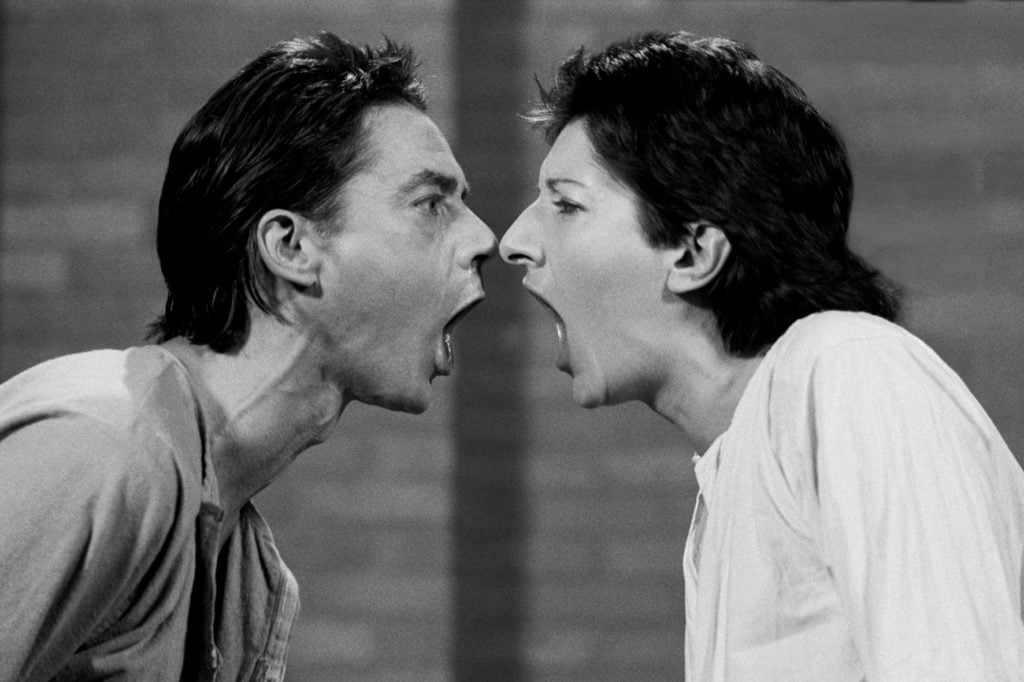
Ulay and Marina Abramović, AAA-AAA(1978). Photo courtesy of the Marina Abramović Archives VG Bild-Kunst, Bonn (2017), ©Ulay/Marina Abramović.
‘Ulay Lives’
A few blocks from the project space in Slovenia, graffiti appeared in the days after his death that read: “Ulay Lives.” His death caused waves in the eastern European nation and it was where his community was planning to host his funeral before it was called off due to the global lockdown. The project space is also more or less on hold, much of its programming moving online or planned for the summer and fall.
Before he died, Ulay was clear that he did not want the physical space to be confused with a gallery. Rather, the artist intended it to be an unhinged, multi-discipline platform. It was, in other words, a reflection of Ulay’s nomadic and spirited way of living and working.
His partner of the last 11 years, Slovenia-born designer Lena Pislak, co-founded the project and says that Ulay’s founding concepts for the space will live on. “Our idea is and remains to keep the spirit of Ulay alive,” Pislak tells Artnet News. “But [our purpose now] is also to broaden an understanding of his work not only for art specialists—curators, artists, and art historians—but also to introduce his incredibly unique way of living and working to young artists and students.”
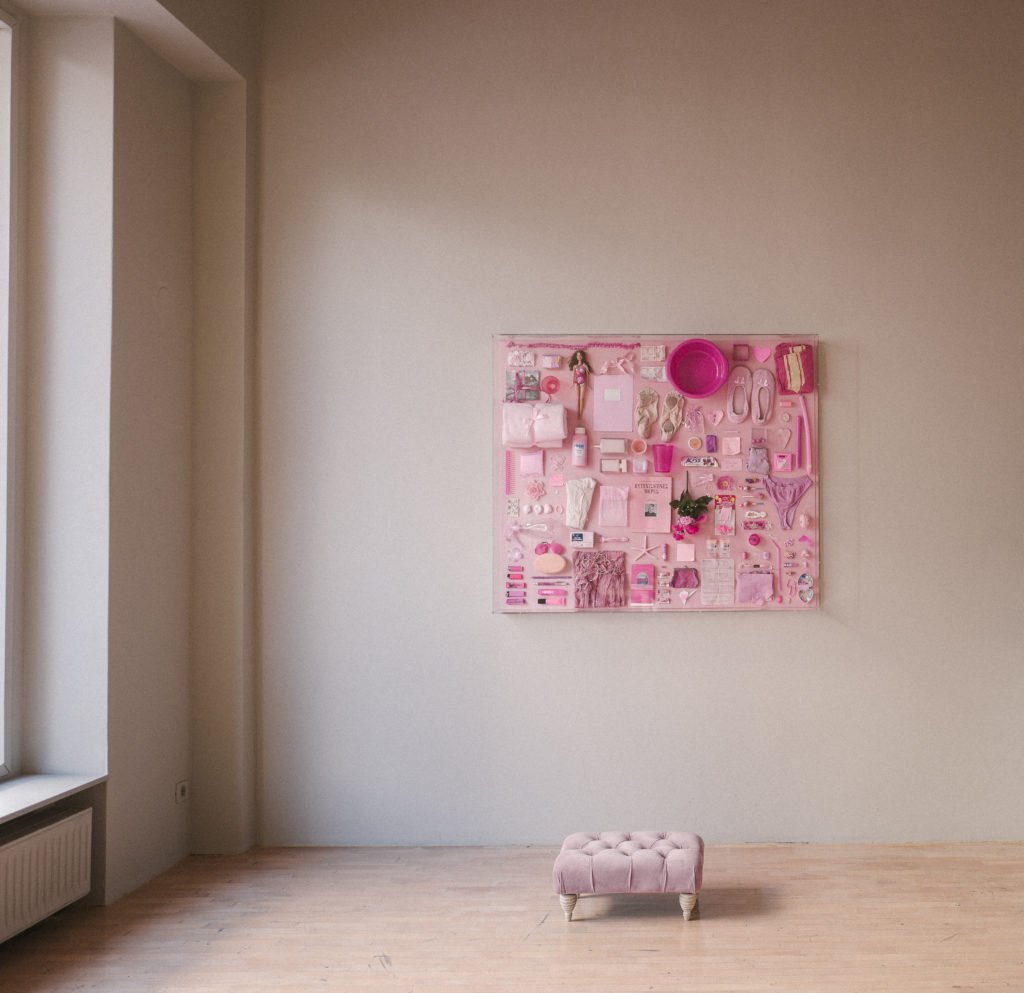
ULAY Foundation Project Space. Photo: Rosa Lux.
Unpacking Ulay
One of the foundation’s principal aims is to educate young people via its para-academic program called “Academia Nuts.” Workshops will be carried out in collaboration with one of Slovenia’s oldest and most respected art festivals, Fotopub, to offer out-of-the-box education targeted at cultural practitioners from different disciplines. The lecturers and mentors for the first edition, which began earlier this year but is now taking place online, includes respected artists and thinkers like curator Saskia Bos and activist group Extinction Rebellion, among others.
Prior to his death, Ulay also created another mentorship program that comes in the form of a suitcase, packed with objects he personally selected. Artists will be given funds for a nomadic residency as well as a bag, which contains a Polaroid camera, a laptop, a scarf, and other items relating to the artist’s practice—almost like a message. The project is spearheaded together with ZOO Magazine, and the aim is to support travel to a different city each year while creating a dialogue between selected artists and Ulay’s archive. Artists can keep the items in the suitcase after the residency.
“I’m not a linear, consistently producing artist,” Ulay had once said of his work. As such, the plan to disperse pieces of it was a way of providing nourishment for a future generation.
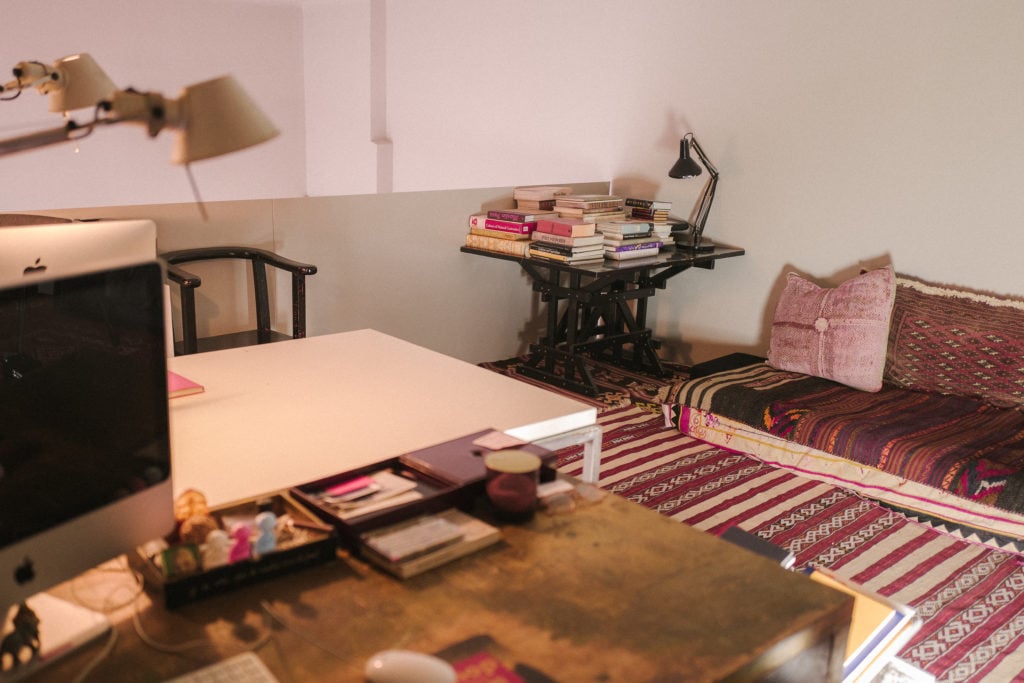
ULAY Foundation Project Space. Photo: Rosa Lux.
The bulk of Ulay’s estate and archive will remain intact, and it is presently being managed by Pislak, who is the executor of the late artist’s estate. It includes thousands of never-before-seen Polaroid photos, negatives, and ephemera from past performances. The Ulay Foundation and Project Space is also forging ahead with the difficult and sometimes chaotic task of organizing and cataloguing the objects and artworks. The goal is not only to categorize things for posterity, but also to reimagine how an archive can function and open up questions about continuity and rupture—themes that were central to Ulay’s practice.
One of the most incisive iterations of this is a project called Code of Conduct, which brings together 121 “partners in performance,” as Ulay called them, and was first realized in Thessaloniki, Greece, in 2015, at a time when the country was struggling to come to terms with both the financial and refugee crises. The undocumented performance was preserved in the form of various pink objects that had been gifted to Ulay over the span of four days by 121 people who were invited to ask him any question they wanted in exchange for bringing him a pink gift. “Pink,” Ulay said at the time, “is the color of my soul; it contains the most light.”
He also associated the color with pain, loss of trust, and with the vulnerability that characterizes this period of his life. “Why feeling blue in blue, I am feeling blue in pink,” he said. The end result, an ornately decorated work mounted to the wall of the foundation and project space in Ljubljana, stands as a testament to Ulay’s life, one that was permanently in flux, ephemeral, transitory, a gesamtkunstwerk of huge relational and social proportions.











